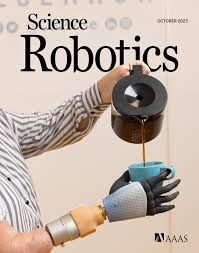A New Era of User-Centric Design
Share

At Marins Med, we believe in creating prosthetic solutions that are as unique as the individuals who use them. This approach is echoed in a recent article by Assistant Professor Jeremy Brown from Johns Hopkins Whiting School of Engineering, published in Science Robotics. Brown’s work emphasizes the critical importance of involving end users in the early phases of prosthesis development, a principle that aligns closely with our mission at Marins Med.
The Challenge of Universal Solutions
Despite significant technological advancements in upper-limb prostheses over the past 50 years, about half of upper-extremity prosthesis users eventually abandon their powered devices. This high abandonment rate is often due to a disconnect between the engineers' and scientists' designs and the actual needs and preferences of the users. Brown highlights this gap, suggesting that the traditional approach of seeking universal solutions is less effective than previously believed.
A Modular, Personalized Approach
Brown and his team, consisting largely of prosthesis users, advocate for a shift towards modular and personalized solutions. This approach recognizes that each user's needs are unique and that a one-size-fits-all method is insufficient. During a full-day workshop at the 2023 IEEE World Haptics Conference, researchers gathered invaluable insights from users, underscoring the wide variability in user needs and preferences.
Addressing Socioeconomic Barriers
One of the critical points raised by panelists at the workshop was the impact of socioeconomic status on access to high-end prostheses. Many individuals with limb loss, especially those without financial means or adequate health care coverage, are unable to afford advanced prosthetic technologies. This overrepresentation of economically privileged users in studies can skew the development and accessibility of these devices.
At Marins Med, we are acutely aware of these barriers. Our body-powered prosthetic devices are designed to be affordable, ensuring that more users can access the technology they need without prohibitive costs. This commitment to accessibility is a core part of our mission to serve the diverse needs of the amputee community.
Our Commitment to User-Centric Design
Darryl DuBre, our CTO, engineer, and inventor, has been a leading force in this user-centric approach. As a 33-year amputee himself, Darryl brings a profound understanding of the challenges and needs of prosthesis users. His firsthand experience drives our commitment to developing functional, durable, and user-friendly solutions.
The ProHensor® (ProHook)
A prime example of our dedication to user-centric design is The ProHensor® (ProHook). This innovative device aims to improve prosthetic acceptance by providing a versatile and functional solution that meets the specific needs of users. By focusing on the real-world challenges faced by prosthesis users, The ProHensor® (ProHook) enhances their daily lives, promoting greater acceptance and satisfaction.
Collaboration and Innovation
Inspired by Brown’s advocacy for user involvement, Marins Med is dedicated to working closely with the end-user community. We aim to foster partnerships with organizations such as the Amputee Coalition and the American Orthotics and Prosthetics Association to ensure our designs are informed by the people who will ultimately use them. By listening to users' actual technological needs, we can develop prostheses that truly enhance their quality of life.
Looking Ahead
As we continue to innovate and improve our prosthetic technologies, we remain committed to making our solutions accessible and affordable. We are exploring more open-source, low-cost approaches to prosthesis development, aiming to reduce the impact of socioeconomic status on users' quality of life.
At Marins Med, we believe that the future of prosthetics lies in personalized, user-driven design. By involving end users from the earliest stages of development, we can create prosthetic devices that are not only advanced but also truly meet the needs of those who use them.
We extend our gratitude to Jeremy Brown and his team at Johns Hopkins Whiting School of Engineering for their groundbreaking work and insights, which continue to inspire and guide us in our mission.
Join the Conversation
We invite you to join us on this journey towards more inclusive and effective prosthetic solutions. Follow us on our social media channels to stay updated on our latest innovations and to see our devices in action.
Together, we can put prosthetics research back in touch with the real needs of users, making a meaningful impact on their lives.
